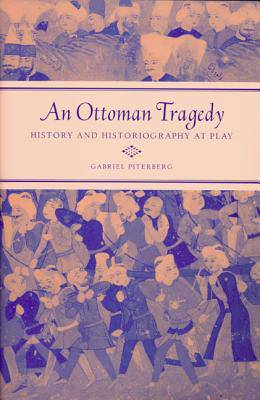
- Afhalen na 1 uur in een winkel met voorraad
- Gratis thuislevering in België vanaf € 30
- Ruim aanbod met 7 miljoen producten
- Afhalen na 1 uur in een winkel met voorraad
- Gratis thuislevering in België vanaf € 30
- Ruim aanbod met 7 miljoen producten
Zoeken
Omschrijving
In the space of six years early in the seventeenth century, the Ottoman Empire underwent such turmoil and trauma--the assassination of the young ruler Osman II, the re-enthronement and subsequent abdication of his mad uncle Mustafa I, for a start--that a scholar pronounced the period's three-day-long dramatic climax "an Ottoman Tragedy." Under Gabriel Piterberg's deft analysis, this period of crisis becomes a historical laboratory for the history of the Ottoman Empire in the seventeenth century--an opportunity to observe the dialectical play between history as an occurrence and experience and history as a recounting of that experience.
Piterberg reconstructs the Ottoman narration of this fraught period from the foundational text, produced in the early 1620s, to the composition of the state narrative at the end of the seventeenth century. His work brings theories of historiography into dialogue with the actual interpretation of Ottoman historical texts, and forces a rethinking of both Ottoman historiography and the Ottoman state in the seventeenth century. A provocative reinterpretation of a major event in Ottoman history, this work reconceives the relation between historiography and history.
Piterberg reconstructs the Ottoman narration of this fraught period from the foundational text, produced in the early 1620s, to the composition of the state narrative at the end of the seventeenth century. His work brings theories of historiography into dialogue with the actual interpretation of Ottoman historical texts, and forces a rethinking of both Ottoman historiography and the Ottoman state in the seventeenth century. A provocative reinterpretation of a major event in Ottoman history, this work reconceives the relation between historiography and history.
Specificaties
Betrokkenen
- Auteur(s):
- Uitgeverij:
Inhoud
- Aantal bladzijden:
- 271
- Taal:
- Engels
- Reeks:
- Reeksnummer:
- nr. 50
Eigenschappen
- Productcode (EAN):
- 9780520238367
- Verschijningsdatum:
- 4/09/2003
- Uitvoering:
- Hardcover
- Formaat:
- Genaaid
- Afmetingen:
- 161 mm x 236 mm
- Gewicht:
- 517 g

Alleen bij Standaard Boekhandel
+ 288 punten op je klantenkaart van Standaard Boekhandel
Beoordelingen
We publiceren alleen reviews die voldoen aan de voorwaarden voor reviews. Bekijk onze voorwaarden voor reviews.








